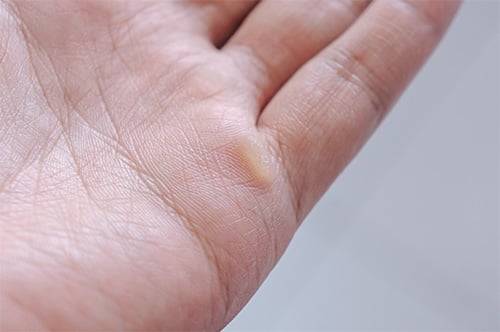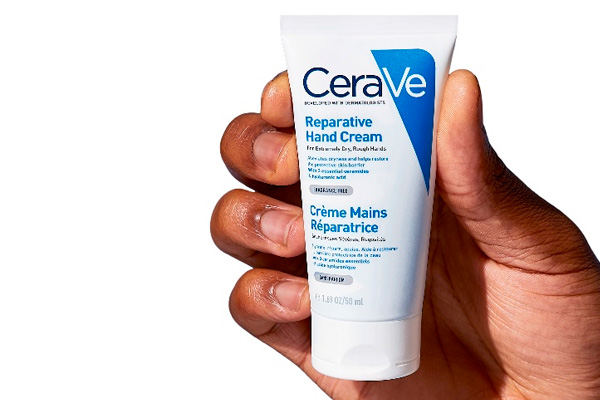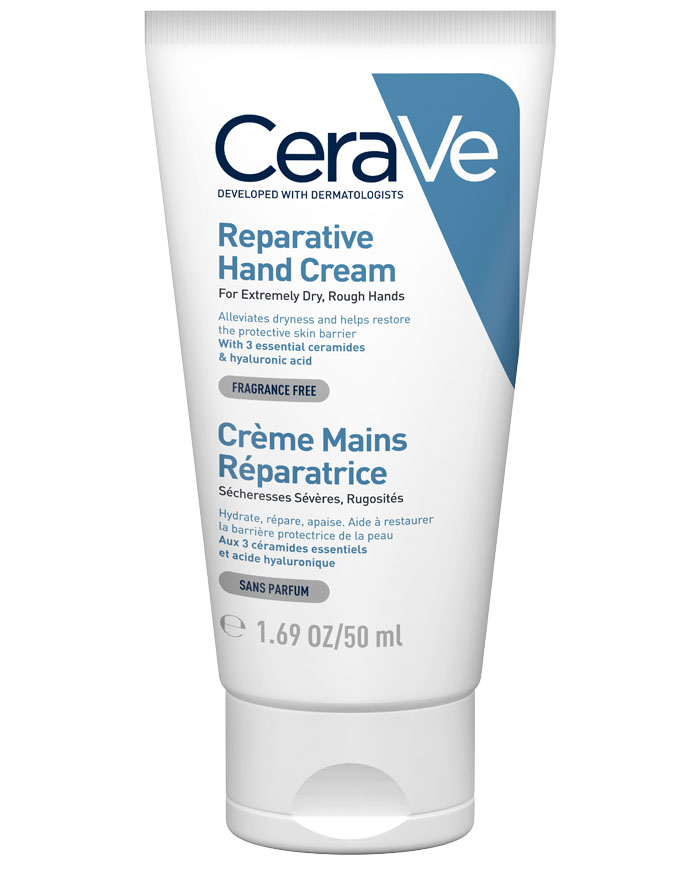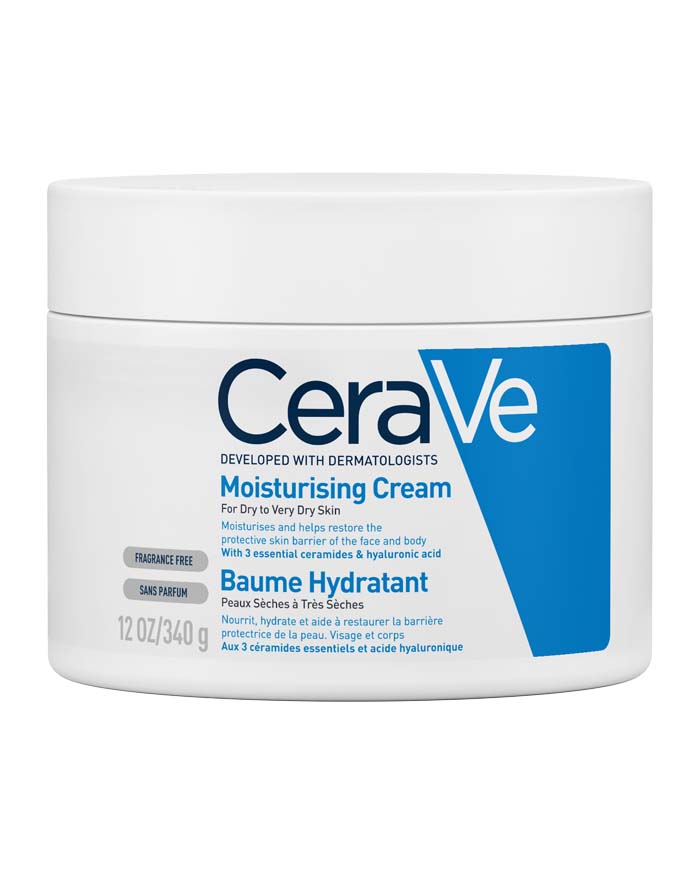Calluses on hands: What you need to know
OVERVIEW
What are calluses on hands?

Calluses on hands are sections of hardened, thickened skin that appear from repeated contact or pressure. Unlike blisters, which contain fluid inside, calluses are dry and hard, and usually have a yellowish or grayish tone.
In general, these formations appear mainly on the knuckles, palms, and fingers. Calluses often manifest themselves when performing activities such as using tools, playing instruments or practicing sports, which involve repetitive or gripping movements. They appear because the skin undertakes a natural protection process against pressure or continuous rubbing.
There are measures that can be taken to prevent calluses, such as wearing protective gloves and using a moisturiser or hand cream to keep the skin soft and supple.
Although it is not a serious problem, calluses can become uncomfortable, painful and, in some cases, get infected. Therefore, if calluses hinder your usual activities, it is advisable to consult a Dermatologist who can guide you to take the appropriate measures.
Causes of calluses forming on fingers and toes
Among the main causes of calluses forming are the following:
- Performing repetitive tasks which require a firm grab, such as typing, playing an instrument, gardening or weightlifting. Taking breaks and stretching the hands and fingers regularly during these activities can help to reduce the risk of calluses formation.
- Exposure to chemicals, so protective equipment is recommended for those who frequently handle substances that are aggressive to the skin.
- Changes in how you walk can lead to uneven weight distribution, resulting in excessive pressure on certain areas of the foot.
- Conditions regarding the bones in your feet, such as bunions, spurs or osteoarthritis, make the affected bony area press against the skin when walking or wearing various footwear.
- Skin conditions such as eczema or psoriasis may cause the skin to be prone to calluses. In these cases, it is advisable to consult a medical professional if calluses are accompanied by other symptoms.
- Inadequate hand hygiene can lead to the accumulation of dead skin cells that may lead to calluses. Therefore, it is essential to use mild, moisturising soaps and lotions to keep your hands clean and healthy.
Types of calluses on hands and feet
- Common calluses are usually painless, and often develop in the weight-bearing areas of your hands or feet, where there's excessive pressure or friction, such as the palms of your hand or heels of you feet.
- Interdigital helomas, commonly known as soft corns, are more problematic and typically form between the toes. Their location can cause discomfort and make them more inclined to infection. To prevent them appearing, our experts recommend wearing appropriate footwear and maintaining good hygiene. In severe cases, callus pads or even surgery may be required. Please consult a specialist if it’s affecting your daily life.
- Hard calluses or plantar nails can appear on the bottom of feet and toes as a result of prolonged standing or ill-fitting footwear. They can be painful and reduce mobility. Therefore, it is important to choose the right footwear and visit a doctor if the callus is infected or bleeding.
- Pulp calluses occur in areas where there's excessive pressure or friction, such as the tip of the toes, and are commonly caused by the friction of footwear or a deviated toe.
How to remove calluses from hands?

There are some methods to target calluses and help them disappear. However, they can reappear if the physical activity or reason that caused them is repetitive in your routine. Therefore, it is important to treat them properly and visit a specialist the skin is injured, or any other problem persists.
Some ways to target them include:
- Using a pumice stone or file. Soak your hands in warm water to soften the calluses, then gently rub the affected areas with the pumice stone or file. It is important to be gentle, as overdoing this can cause pain and discomfort, and possibly worsen the situation.
- Using a cream designed specifically for roughness on your hands. These creams work by helping soften the calloused skin and facilitating its removal.
- Prevention is always the best strategy when dealing with calluses. For example, using protective gloves and a moisturiser or hand cream to keep the skin soft and supple.
It is important to follow up with the appropriate treatment so the calluses do not get infected or cause pain.
Cream for calluses on hands
You can soften the calluses on your hands, with specific creams that contain moisturising ingredients, although you may be unlikely to completely prevent the appearance of new calluses by only moisturising, so it’s important to continue to take on-board the other protective measures mentioned before too.
CeraVe Hand Repair Cream is a great option if you have extremely dry hands and are looking for a product that helps to smoothe hardened skin. This cream is developed with Dermatologists, and formulated with 3 essential ceramides and multivesicular technology. It helps to moisturise skin whilst improving skin barrier function. This formulation also includes hyaluronic acid and glycerin, both with nourishing and moisturising properties.
The cream should be gently massaged in the affected area, making sure it is completely absorbed.
The hand cream should be applied as often as necessary to achieve results.
In addition to moisturising and nourishing hands, hydration is very important for the rest of the body. CeraVe Moisturising Cream is a product developed by Dermatologists, and suitable for sensitive and dry skin. It aims to moisturise and protect dry and flaky skin by providing intense and long-lasting hydration. It is composed of a combination of ingredients, including essential ceramides, hyaluronic acid and glycerin. This formula helps strengthen the skin's protective barrier to keep the skin hydrated and protected from external agents.
Tips to prevent calluses on fingers and toes
The most important treatment for calluses is prevention. Therefore, using the right equipment when performing your daily activities is crucial. Discover some of our top tips to prevent the formation of corns and calluses below:
- Wear gloves: Gloves serve as a protective barrier between your skin and any rough surfaces or harsh chemicals you may encounter while working. Gloves also help maintain moisture in the skin, which can further prevent the formation of calluses by keeping your hands hydrated.
- Wear comfortable shoes: Opt for comfortable footwear that offers ample room for your toes, as well as the width of your foot. Avoid prolonged use of high heels, as they can create excessive pressure on specific areas of the feet and cause discomfort. Moreover, changing shoes regularly not only gives your feet a chance to rest but also minimises pressure and friction.
- Wear socks: Ensure to wear socks correctly, without folds or seams that can generate pressure and rub your skin.
- Use protective insoles: Supportive insoles can alleviate pressure on the skin. Consider using toe separators as well for added comfort and protection against potential pressure points.
- Moisturising: Regularly apply a specific cream, ointment or moisturising lotion on your feet. Massage until completely absorbed.
- Visit a specialist: If you suffer from corns or other skin conditions on your hands or feet, it is advised that you see a specialist. The specialist can analyse your footprint to help determine the greatest pressure points when walking, and then provide the most accurate diagnosis.

